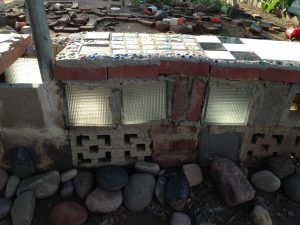 This post is not about dieting. Nor is it about body types or places where slender people reside. It’s about places where we have access to light in a different way. I first ran across the term “thin places” when I began studying the work of John O’Donohue, the late Irish poet and philosopher. According to Celtic philosophy, there are places on earth where the “veil” between the seen and unseen world is thinner than other places, where a sense of sacredness is more present. The poet Sharland Sledge describes it this way:
This post is not about dieting. Nor is it about body types or places where slender people reside. It’s about places where we have access to light in a different way. I first ran across the term “thin places” when I began studying the work of John O’Donohue, the late Irish poet and philosopher. According to Celtic philosophy, there are places on earth where the “veil” between the seen and unseen world is thinner than other places, where a sense of sacredness is more present. The poet Sharland Sledge describes it this way:
‘Thin places’ the Celts call this space
Both seen and unseen,
Where the door between this world
And the next is cracked open for a moment
And the light is not all on the other side.
I noticed one of these thin places on our playground a few weeks ago. It was late afternoon as I observed light shining through glass blocks in the wall separating the K-1 and 3rd/4th graders’ outdoor areas. It was a breathtaking moment and everything else around me seems to slide away. I felt a strong sense of peace and a deep gratitude for this moment of interplay between glass and light. The way I felt reminded me of “thin places.” It set off both an inquiry and investigation into what this term means and how it applies to life here at the Seed.
In a photo essay by Sarah Blanton (http://www.onbeing.org/blog/thin-places-and-the-transforming-presence-of-beauty/6180), she describes the lake of her childhood as her “thin place.” She writes of its constant invitations for reflection, a place that “pulls me out of the shallow fray of my frantic life to rest in a centered awareness.” John O’Donohue refers to these places as thresholds. Eric Weiner, in his New York Times travel section article (http://www.nytimes.com/2012/03/11/travel/thin-places-where-we-are-jolted-out-of-old-ways-of-seeing-the-world.html?_r=0), asks what exactly makes a place thin. He says it’s sometimes easier to say what it isn’t, rather than what it is. He goes on to explain, “Thin places relax us, yes, but they also transform us — or, more accurately, unmask us. In thin places, we become our more essential selves.”
Although much of everyday life at the Seed is anything but relaxing and tranquil, we do have our thin places. I remember a time in the summer of 1999 when we were under construction, ready to make the move to our new location on 40th Street. It was monsoon season and our playground had no grass, just contoured dirt hills and a huge body of rain water. That summer Bill and I took a 13-hour vacation. The rest of it was working on the building. I missed my annual trek to Minnesota and at sunset one evening sat on a dirt hill, watching visiting ducks enjoy their water play. It was as close to Minnesota as I knew I’d be that year. Nevertheless, it felt like a sacred time in a sacred place, connected to a sacred mission, the Seed. I hadn’t heard of “thin places” then and I am pretty sure it was one, fleeting as it was.
Gwen’s Castle (https://www.awakeningseedschool.org/2011/04/a-castle-for-gwen/) is another thin place. Amidst the constant activity of children playing, it asks us to pause and appreciate the preciousness of life. Whenever I go out there, either supervising children or giving tours of the school, I remember how lucky I am to be a part of all this. It’s work that is rife with thin places, visible when our hearts are open and our practices are in alignment with what’s best for children and our planet.

Mary, this is beautiful.
Beautiful thoughts and beautifully written. Thank you for sharing it with me.